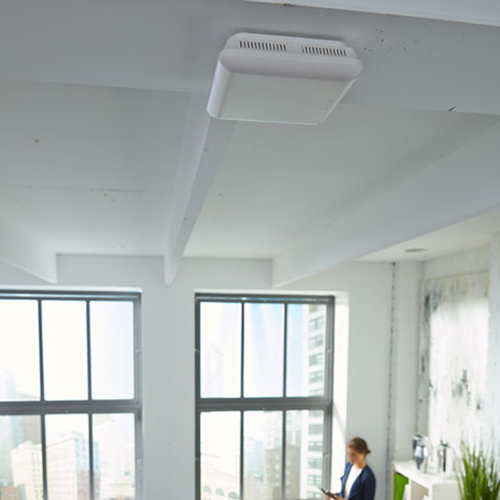Wireless roaming should be more than just fast, it should be active and seamless.

How Do You Roam?
Don't let dropped WiFi coverage slow you down. Learn how to make the most out of your WiFi network.

Solve The Sticky Problem
Harnessing the power of WiFi roaming is just a Luxul product way.
TEST YOUR ROAMING IQ
Q: What is roaming?
ANSWER: Roaming is the term used to describe the transition of a client device from one access point to another in a WiFi network.
Q: What is "Fast Roaming?"
ANSWER: When roaming, at the point when a client device disassociates from one access point, then reattaches to a new, closer access point, “Fast Roaming” speeds up the reconnect transition between access points.
Q: When talking about roaming, what does “stickiness” mean?
ANSWER: “Stickiness” describes the connection a client device has with an access point. Client devices will hold on to an access point as long as possible—even if it means terrible WiFi speeds—before they disconnect and reconnect to a closer, stronger access point. That “death grip” connection is what “stickiness” refers to.
Q: What is “Seamless Roaming?”
ANSWER: “Seamless Roaming” describes a roaming experience where the WiFi connection never drops, decreases in speed, or glitches when a client device transitions from one access point to another—this can only be accomplished with an active controller solution.
Q: Is “Fast Roaming” the same as “Seamless Roaming?”
ANSWER: No. “Fast Roaming” addresses the time it takes for a client device to reconnect to a new access point, which does not address solve the “stickiness” issue. “Seamless Roaming” addresses the “stickiness” client devices have to a single access point, forcing them to transition to an access point with a stronger signal before the stickiness ever becomes an issue.
Q: How fast does a client device disconnect and reconnect to another access point?
ANSWER: When roaming, after a client device is disconnected from an access point, “Fast Roaming” enables the client device to reconnect to a stronger access point within 100ms.
Q: How can I reduce WiFi “stickiness?”
ANSWER: “Stickiness” within a WiFi network will always be present unless you use an active controller solution like Luxul’s Roam Assist™ technology, included in Luxul’s wireless routers and controllers.
Q: When does roaming come in to play?
ANSWER: Roaming will happen any time you have more than one access point in a wireless network.
Q: Does “Fast Roaming” address “stickiness?”
ANSWER: “Fast Roaming” does not address device stickiness; it only addresses transition time after a client device decides to roam.
Q: Do all controllers provide an active solution?
ANSWER: Not all controllers provide an active solution; most only allow for a centralized configurator—the ability to manage access point configurations centrally.
Q: What does an active roaming solution do?
ANSWER: When an active solution is implemented in a wireless network, it does the following:
- monitors access point to client device signal strength
- determines if a better access point is available
- pushes the client device to the access point with a stronger signal

Join The Roaming Revolution
Sign up for our Roaming Revolution mailing list to receive access to discounts, promos, and updates.

Want more information on active roaming and Luxul Roam Assist?
Fill out this form if you want additional info, and our sales team will contact you.



